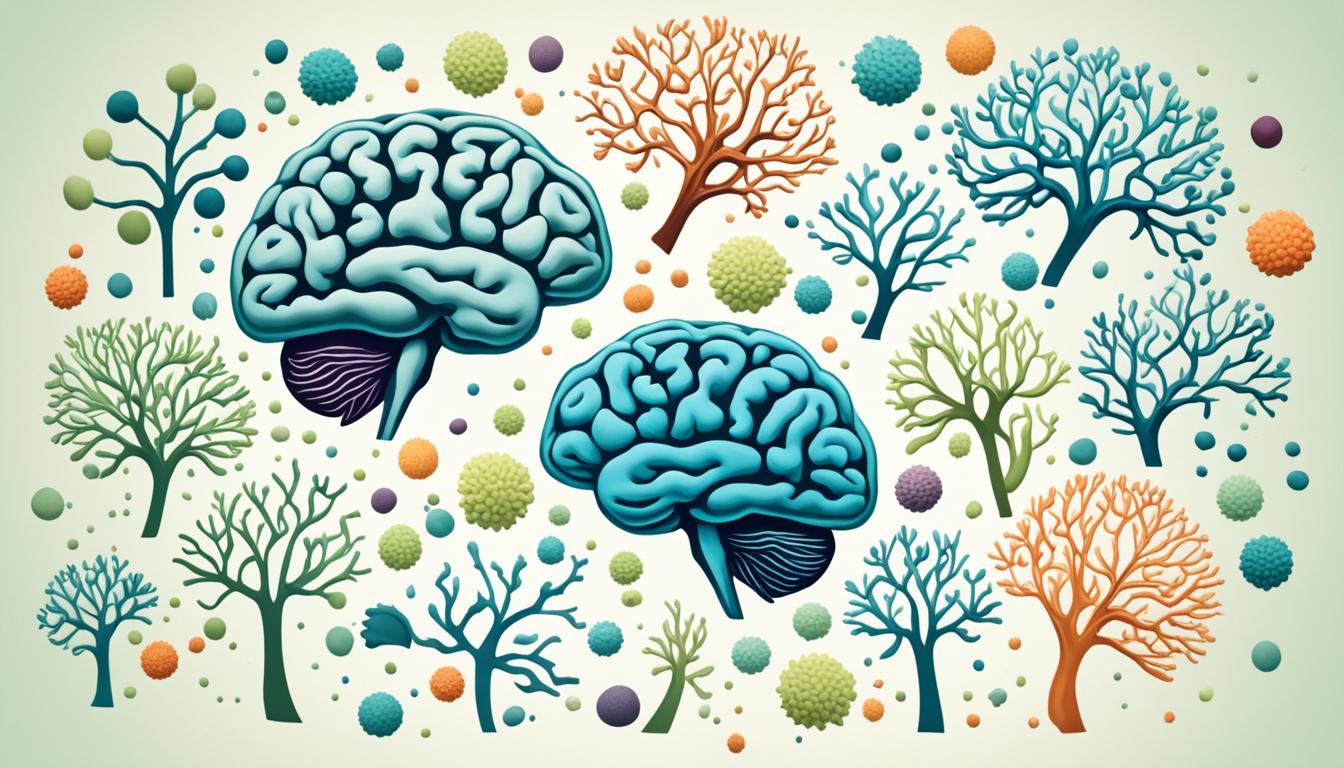Dementia Frontotemporal is a type of brain disease. It affects the frontal and temporal lobes. This disease leads to changes in behavior, issues with language, and memory loss.
One specific form of this disease is called Pick’s disease. It’s caused by a genetic issue. People with Pick’s disease have a lot of unusual proteins in their nerve cells.
There is no cure for this type of dementia yet. But, doctors work hard to control the symptoms. Using stem cells for treatment might work. It has shown good results with a similar disease, Niemann-Pick disease.
Key Takeaways:
- Frontotemporal dementia attacks certain parts of the brain, causing various symptoms.
- These symptoms include changes in how a person acts, difficulty with language, and memory loss.
- Pick’s disease is a specific type that comes from a genetic issue and causes certain protein changes.
- Currently, there is no way to cure frontotemporal dementia. Treatment focuses on managing the symptoms.
- Stem cell therapy is being studied and has potential as a treatment for these group of diseases.
Symptoms and Diagnosis of Dementia frontotemporal
Frontotemporal dementia, or FTD, affects behavior, personality, and how we speak. Its type decides what symptoms show up.
Behavioral Variant Frontotemporal Dementia (bvFTD)
BvFTD shows as impulsive actions, not caring much, lacking empathy, and eating differently. People with it may behave oddly in social situations.
Primary Progressive Aphasia (PPA)
PPA makes speaking and understanding others hard. Those with PPA find it challenging to use words or talk with others.
Semantic Dementia
In semantic dementia, words and meanings become tough to grasp. Recognizing things or what words stand for can be hard.
Pick’s Disease
Pick’s disease causes memory loss and language issues. It happens when unusual proteins collect in nerve cells.
Diagnosing FTD involves studying symptoms, brain scans, and evaluations. Doctors use these to find out what’s causing the symptoms.
Seeing a doctor for proper FTD diagnosis and care is critical. Early diagnosis makes it easier to deal with symptoms and plan for the future.
Causes and Genetic Factors of Dementia frontotemporal
The causes of dementia frontotemporal are complex and still being researched. Genetic factors are thought to play a big part in its development. Certain genetic mutations are linked to diseases like Pick’s, which is a type of frontotemporal dementia.
The tau gene mutation is a key player. It causes the build-up of abnormal proteins in nerve cells. This buildup damages brain tissue, leading to the symptoms of Pick’s disease.
Frontotemporal dementia can run in families. This happens when a specific gene mutation is passed from one parent to their children. But remember, not all cases are due to a genetic mutation. More research is needed to fully understand this complex disease.
Risk Factors for Frontotemporal Dementia
Genetics are a significant factor, but there are other risks too. It’s often diagnosed in people between 40 and 65 years old. This means age is also a risk factor for the disease.
If someone in your family has had frontotemporal dementia, your risk is higher. This shows how important it is to understand the genetic aspects of the disease.
However, the disease can also appear without any family history. This fact emphasizes the need for more research into possible causes not linked to genes.
The Importance of Genetic Counseling
Because genetics are important, genetic counseling can help a lot. It offers information and support for those with a family history. It covers risks and available tests.
Knowing about the genetics can help families make better health decisions. This proactive mindset can significantly help in managing the disease.
Stem Cell Therapy as a Potential Treatment for Dementia frontotemporal
There is no cure for dementia frontotemporal yet. But, stem cell therapy shows hope as a treatment. It’s been successful in treating Niemann-Pick disease, a similar condition. In these patients, stem cells improved their symptoms by replacing unhealthy cells.
Because it’s helped in similar diseases, experts are now looking at its benefits for frontotemporal dementia. This type affects the frontal and temporal lobes of the brain. But, more studies and testing are needed to know if it’s both effective and safe.
If you’re thinking about stem cell therapy for this type of dementia, talk to your doctor. They can help you understand what to expect in terms of results, costs, and the treatment period. It’s important to be fully informed about the possible risks and benefits before you decide to go ahead.

